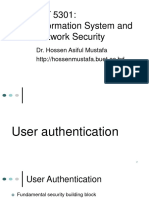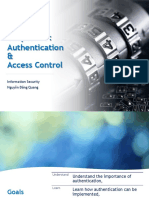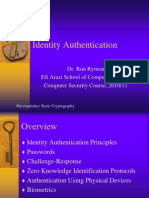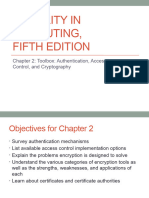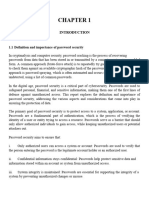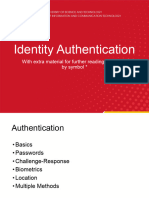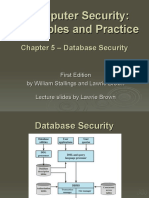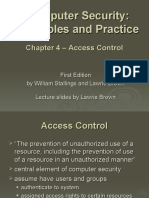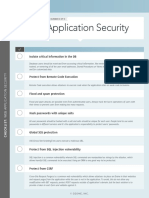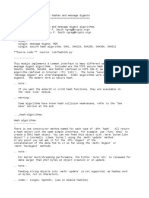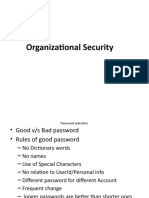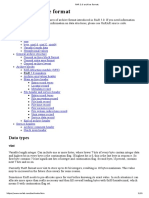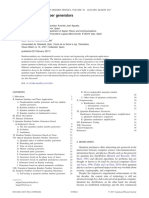0% found this document useful (0 votes)
322 views26 pagesUser Authentication Essentials
User authentication is the process of verifying a user's identity and includes identification and verification. It is a fundamental security building block. Common authentication methods include passwords, tokens, and biometrics. Passwords are vulnerable to guessing and dictionary attacks. Stronger authentication can be achieved through two-factor authentication using tokens or biometrics. Remote authentication introduces additional challenges like eavesdropping and replay attacks.
Uploaded by
krishnakumar velapanCopyright
© © All Rights Reserved
We take content rights seriously. If you suspect this is your content, claim it here.
Available Formats
Download as PPT, PDF, TXT or read online on Scribd
0% found this document useful (0 votes)
322 views26 pagesUser Authentication Essentials
User authentication is the process of verifying a user's identity and includes identification and verification. It is a fundamental security building block. Common authentication methods include passwords, tokens, and biometrics. Passwords are vulnerable to guessing and dictionary attacks. Stronger authentication can be achieved through two-factor authentication using tokens or biometrics. Remote authentication introduces additional challenges like eavesdropping and replay attacks.
Uploaded by
krishnakumar velapanCopyright
© © All Rights Reserved
We take content rights seriously. If you suspect this is your content, claim it here.
Available Formats
Download as PPT, PDF, TXT or read online on Scribd
/ 26





